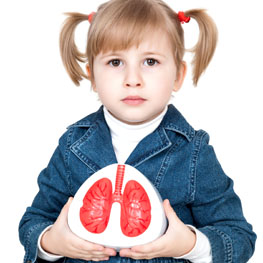
A large number of kids miss school due to asthma. In addition to missing valuable instructional time, children and teens can feel self-conscious about their absence and condition. If your child is one of the increasing number of children affected by this chronic, inflammatory lung disease, increasing your knowledge about asthma can improve your child’s condition and possibly reduce school absences.
Here are some tips about triggers and treatments:
Use a spacer - A spacer is a large, plastic container that helps your child receive the intended dosage of their medication. The puffer is inserted into one end and the other end is a mouthpiece. Smaller children may have a face mask on the mouth end to help the device stay sealed so no medicine escapes.
Is your child using their spacer at school? Registered Respiratory Therapist Carolyn McCoy says older children sometimes stop using the spacer because it is bulky to carry and draws attention to them and their condition. If you notice your child’s asthma flaring up during the school year, talk about how they are using their inhaled medication. If your child finds their current device too visible, speak to your doctor about options that are less obvious but equally effective.
Perfect your technique - Only 9 per cent of patients use their inhalers effectively. Using spacers and puffers is not as simple as taking a breath. There are several styles and each requires a different technique. Discuss technique with a pharmacist, respiratory therapist or doctor. You can also visit a reputable website to watch demonstrations. Ensure your spacer matches your inhaler as that is another critical ingredient to proper usage. Review your technique regularly.
Go smoke-free - Tobacco smoke can trigger an asthma attack. If you smoke and your child has asthma, consider a smoking cessation program to help you butt out. Not only is second-hand smoke an irritant but third-hand smoke - that residue that clings to a smoker’s body, clothing and furniture - can also trigger an attack. Look for places your child may be exposed to third-hand smoke: A caregiver’s home, a teacher’s clothing, hanging out with friends who smoke. Eliminate all smoke exposure.
Make sense of scents - Parents may also notice increased asthma issues during the school year because children are spending more time indoors where they may encounter allergens such as dust mites and irritants like scented products. According to McCoy, the issue with scents is significant in junior and high school when students are conscious about smelling nice to increase their attractiveness to the opposite sex. “It’s hard for kids to accept that their body wash or the perfume that they want to wear is affecting the health of the student next to them. They get the risk of peanuts, but not scents.”
If you notice your teen’s asthma is worsening, ensure they are wearing non-scented products and inquire about scents at school. If this is an issue, speak to the school about a scent awareness program.
Battle dust mites - Many children’s asthma is worse at night. Although this phenomenon is not fully understood, McCoy suggests that limiting dust mites in your child’s bedroom will help because this is another asthma trigger. Vacuum carpets frequently, consider removing carpets and dust the bedroom regularly. Dust-mite covers for pillows and mattresses are expensive, but effective. If your child is young and has a bed filled with stuffed animals, wash them weekly to kill the mites and negotiate reducing the number of bed buddies to decrease your workload.
Consider inhaled steroids - If your child needs to use their rescue medication twice a week (other than for exercise), this is a clue that your child may need to add an inhaled steroid to their asthma management plan. Controlling asthma in childhood is essential for children to participate fully in school and activities, and for future health. McCoy says many parents she helps are afraid of steroids but they do help to control the inflamed airways. “Asthma that is poorly controlled during childhood causes the airways to become smaller, a phenomenon called ‘airway remodeling.’” You want to avoid this.
Discuss all symptoms and treatment options with your doctor. Educating yourself about asthma will improve your child’s health and may help you rest a little easier.
Resources
Proper technique - www.on.lung.ca/page.aspx?pid=413
Asthma Society of Canada - www.asthma.ca
Canadian Lung Association – www.lung.ca
Sue’s son has asthma, and she realizes they both need to brush up on their spacer technique.
Calgary’s Child Magazine © 2024 Calgary’s Child